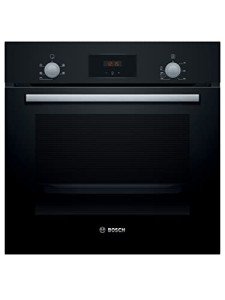Ten Built In Electric Ovens That Really Change Your Life
페이지 정보

본문
The Comprehensive Guide to Built-in Electric Ovens and Hobs
In today's hectic world, modern kitchen appliances have progressed drastically to deal with the tastes and needs of contemporary homeowners. Among these appliances, built-in electric ovens and hobs stand out for their performance, style, and performance. This post explores the functions, advantages, installation ideas, and upkeep of built-in electric integrated ovens for sale and hobs, alongside dealing with often asked concerns.
Comprehending Built-in Electric Ovens
What Is a Built-in Electric Oven?
A built-in electric oven is a device designed to be set up into a wall or kitchen cabinetry, providing a smooth, integrated ovens look in the kitchen. Unlike freestanding ovens, built-in models save space and often come geared up with extra functions such as self-cleaning cycles, convection cooking, and various cooking modes.
Kinds Of Built-in Electric Ovens
- Single Ovens: Ideal for smaller sized cooking areas or those who prepare for less individuals.
- Double Ovens: Offer more cooking space, appropriate for bigger families or those who entertain frequently.
- Combination Ovens: These include both a standard oven and a microwave, providing versatile cooking alternatives.
Advantages of Built-in Electric Ovens
| Advantage | Description |
|---|---|
| Space-Saving Design | Fits perfectly into kitchen cabinetry, releasing up counter area. |
| Improved Aesthetics | Produces a modern, expert kitchen look. |
| Versatile Cooking Options | Frequently features multiple cooking modes including bake, broil, and convection. |
| Energy Efficient | Takes in less energy than conventional ovens. |
Comprehending Built-in Hobs
What Is a Built-in Hob?
A built in range-in hob is a cooking surface installed into the kitchen countertop, incorporating flawlessly with the kitchen design. Offered in electric, induction, and gas varieties, electric hobs are renowned for their accuracy and Built in electric ovens ease of use.
Types of Built-in Hobs
- Electric Hobs: Traditional coil components that heat via electrical resistance.
- Induction Hobs: Use magnetic energy to heat just the cookware, making them faster and more secure.
- Ceramic Hobs: Feature a smooth surface area with convected heat below, using simple cleansing.
Advantages of Built-in Hobs
| Benefit | Description |
|---|---|
| Quick Cooking Times | Electric hobs heat quickly, reducing general cooking time. |
| Easy to Clean | Flat surface area permits quick and uncomplicated cleansing. |
| Long lasting | Typically built to last and hold up against heats. |
| Versatile Compatibility | Works well with numerous pots and pans products. |
Setup Considerations
Installing a built-in electric oven and hob needs cautious preparation.
Steps for Installation
- Step the Space: Ensure the measurements of the oven and hob match the allocated area in your kitchen.
- Inspect Electrical Requirements: Consult an electrician to guarantee circuitry can manage the device's power needs.
- Placement of Appliances: Position the oven at a hassle-free height, usually between waist and eye level.
- Ventilation: Ensure correct ventilation, specifically if your oven integrates a range hood.
Vital Tools
- Power drill
- Screwdrivers
- Level
- Measuring tape
Security Precautions
- Always detach the power before installation.
- Follow maker guidelines carefully.
- Think about employing a professional for electrical connections.
Maintenance Tips
Maintaining built-in electric ovens and hobs is vital for durability and performance.
Routine Care Routine
- Cleaning the Surface: Use a soft cloth and manufacturer-recommended cleaner.
- Examining Electrical Connections: Check cables and plug for damages occasionally.
- Cleaning Filters: If the oven has a ventilator, clean or change the filters as needed.
Troubleshooting Common Issues
| Problem | Possible Solution |
|---|---|
| Oven Won't Heat | Inspect the power supply and heating aspect. |
| Heating Inconsistency | Examine the thermostat and oven calibration. |
| Hob Not Heating | Guarantee cookware works and inspect the power supply. |
Regularly Asked Questions
1. How do I choose the ideal size built-in electric oven?
Choosing the ideal size involves determining your kitchen area and thinking about how much cooking you typically do. If you amuse regularly or have a large family, choose a double oven.
2. Are built-in electric hobs safe to utilize?
Yes, built-in electric hobs are safe, particularly induction hobs which only heat up the pots and pans, decreasing the danger of burns.

3. Can I set up a built-in oven and hob myself?
While it is possible for skilled DIY enthusiasts, hiring a professional is suggested, particularly for the electrical connections.
4. How frequently should I clean my built-in oven and hob?
Cleaning up must be done routinely after use, with deep cleaning periods depending upon cooking frequency - normally every couple of months.
5. Do built-in appliances need special upkeep?
built in electric ovens, click the following page,-in appliances need similar upkeep to freestanding designs, but appropriate care should be taken with their surrounding kitchen cabinetry.
built in oven-in electric ovens and hobs provide a blend of innovation and style, providing efficiency and contemporary looks to any kitchen. With proper selection, careful setup, and routine maintenance, these appliances can improve one's cooking experience for many years. Comprehending the functions, advantages, and care requirements can empower property owners to create the kitchen of their dreams-- efficiently and stylishly.
As cooking areas continue to develop into central centers of the home, selecting the ideal built-in solutions plays a vital role in everyday cooking creativity and built in Electric ovens pleasure.

- 이전글What's The Job Market For Large Built In Ovens Professionals Like? 25.05.20
- 다음글12 Companies That Are Leading The Way In Large Integrated Oven 25.05.20
댓글목록
등록된 댓글이 없습니다.



